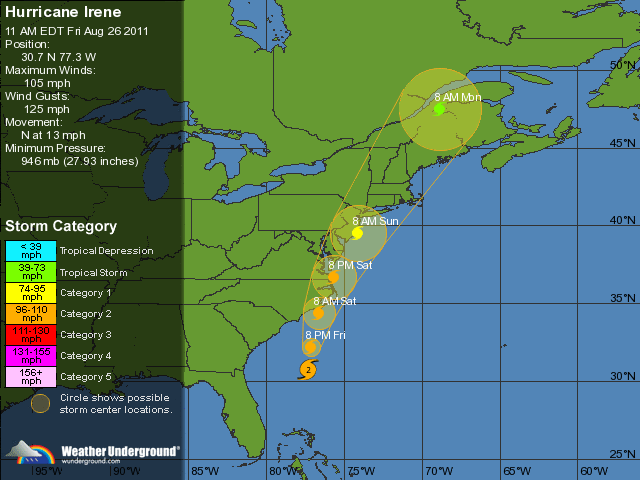If you pay attention to economics it’s hard not to predict a Democratic defeat in 2012 of epic proportions starting at the top with Barack Obama.
Fact: The US economy has just entered or is about to enter the second leg of at least a Double Dip Recession.
Second-quarter growth cut on inventories, trade
By Lucia Mutikani, Reuters
WASHINGTON | Fri Aug 26, 2011 12:43pm EDT
(Reuters) – U.S. economic growth in the second quarter was slower than previously thought and consumer confidence sank in August, further reducing prospects of a strong pick-up in output in the second half of the year.
Gross domestic product expanded at an annual rate of 1 percent, the Commerce Department said on Friday, as business inventories and exports were less robust. That was a downward revision of the government’s prior 1.3 percent growth estimate.
Separately, the Thomson Reuters/University of Michigan consumer sentiment index fell to 55.7 this month from 63.7 in July.
…
The economy advanced just 0.4 percent in the first quarter. Economists had expected second-quarter GDP to be marked down to a 1.0 percent rate.
The second GDP estimate for the quarter confirmed growth almost stalled in the first six months of this year.
Chance of Recession Is as High as 80%: Study
By: John Melloy, Executive Producer, Fast Money & Strategy Session, CNBC
Published: Thursday, 25 Aug 2011 | 6:55 PM ET
The Philly Fed puts a recession probability at 85.7 percent, while the consumer survey puts contraction chances at 80 percent, according to Bank of America’s probability model, which uses a so-called Bayesian technique that “tests if the economy is in a recession based on the interaction of variables that are associated with turns in the business cycle.”
…
According to their data, the Philly Fed has accurately forecast four of the last seven recessions. The older Michigan survey has accurately signaled three of the last eight recessions.
“It’s a 100 percent chance,” said Peter Schiff, CEO & Chief Global Strategist of Euro Pacific Capital. “In fact the recession might have already started.”
World Facing 50% Danger of Another Recession, Nobel Laureate Spence Says
By Robyn Meredith, Bloomberg News
Aug 25, 2011 7:00 PM ET
“I’m quite worried,” Spence said in a Bloomberg Television interview in Hong Kong yesterday. “A combined downward dip in Europe and America, which is a good chunk of the industrialized economies, I’m quite sure will take down growth in China particularly, and that will then immediately spread to the rest of the emerging economies.” He put the likelihood of such a scenario “at about 50 percent.”
…
China “cannot make up for the kind of loss of demand that would go with a downturn in the advanced economies,” Spence said. Because Chinese inflation is running at an official rate of 6.5 percent, a figure many economists say is understated, Beijing would be “pretty close to nuts” to fuel further credit growth, he said.
QE3 Is Coming by Year End: Roubini
By: Margo D. Beller, CNBC
Published: Thursday, 25 Aug 2011 | 5:49 PM ET
Roubini, also known as “Dr. Doom,” puts the chance of a double-dip recession at 50 percent.
…
While bad economic data on housing, jobs and home sales suggests a double-dip in the U.S., Ireland, Portugal, Italy and Spain “are already back in recession or never got out of the first one.” Data also suggest France and Germany are in “borderline contraction” while the U.K. “has not had any economic growth for three quarters.”
With Economic Pessimism Rising, Americans Move Towards Keynesianism
By: Jon Walker, Firedog Lake
Friday August 26, 2011 9:30 am
(T)here is now a slim plurality of the country ready to embrace real spending on jobs programs. A five point increase over two months is a rather impressive amount of movement on what could be considered a fairly fundamental question of government ideology.
More government spending to create jobs is exactly what Keynesian economics prescribes. The fact that, without realizing it, more Americans are open to the idea of Keynesian spending to help the economy is remarkable given how the top leadership in both political parties have trumpeted the importance of deficit reduction over all else for so long. And Republicans have been openly disparaging Keynes, just as they did in the Great Depression.
This change in attitudes is a reflection of just how seriously worried regular people are right now about what they perceive as the worsening state of the economy. Since the last time Pew asked this (my link- ek) question the number of people who think the economy is getting worse has increase by over 10 points according to Gallup’s tracking poll.
AP-GfK poll: Views on economy, Obama role sour
By TOM RAUM, Associated Press
22 hrs ago
The survey found that 86 percent of adults see the economy as “poor,” up from 80 percent in June. About half – 49 percent – said it worsened just in the past month. Only 27 percent responded that way in the June survey.
…
As the public’s outlook on the economy dips, so has approval for the president’s economic stewardship.
More than 6 in 10 – 63 percent – disapprove of Obama’s handling of the economy. Nearly half, or 48 percent, “strongly” disapproved. Approval of his economic performance now stands at just 36 percent, his worst approval rating on the issue in AP-GfK polling.
Among Democrats, 58 percent approve of the president’s handling of the economy, down from 65 percent in June. Among Republicans, approval dipped to 9 percent from 15 percent.
Just 51 percent consider Obama a strong leader, down from 60 percent in June and 65 percent following the capture and death of Osama bin Laden in May. In June, 85 percent of Democrats in the poll called him a strong leader. Now, the number is down to 76 percent.
…
Some 75 percent in the poll said the country is heading in the wrong direction, up from 63 percent in June. Among Democrats, 61 percent chose “wrong direction” – up from 46 percent in June.
In a new high, 52 percent of all adults said they disapprove of his overall performance – 52 percent, up from 47 percent in June. Among Democrats, approval fell 8 points, to 74 percent from 82 percent in June. Among Republicans, it fell to 11 percent from 22 percent.
…
Unemployment increased to 9.2 percent in July, up from 9.1 percent in June. And most economists don’t expect it to decline much below 8.5 percent by the November 2012 presidential election. No president has won re-election with a jobless rate that high since Franklin D. Roosevelt in 1936.
Stock Tip: Be Worried. Workers are Consumers.
Robert Reich
Friday, August 19, 2011
We’re slouching toward a double dip, and the stock market is imploding, because consumers – whose spending is 70 percent of the economy – have reached their limit.
It’s not just the jobless who can’t spend. It’s mainly people with jobs. Median wages continue to fall. Weekly wages in July for Americans with jobs were 1.3 percent lower than eight months before.
…
Many on Wall Street are scratching their heads, trying to understand why the stock market is plummeting. After all, they tell themselves, corporate earnings are still near record highs.
But it’s becoming clear those earnings can’t be sustained. Corporate earnings are the highest they’ve been relative to worker wages and benefits since just before the Great Depression. And the richest 1 percent of Americans are getting a higher percent of total income since just before the Great Depression.
Get it? It was only a matter of time before the boom on Wall Street turned into a bust. Economic booms cannot continue without American workers participating in them.
…
What will happen to the Dow Jones Industrial Average when corporate earnings revert to their historic average relative to American wages? I’ve seen various estimates. They’re not pretty.
Bernanke “optimistic.” Philly Fed says another recession 85% sure; Roubini says it’s coming
by John Aravosis, Americablog
on 8/26/2011 10:40:00 AM
Anyone who votes to cut any spending this year or next, or signs such legislation, shouldn’t be re-elected. Period. This is criminal that Congress and the President just cut spending, and now plan on doing it again in the super committee. It’s equally criminal that the President refused to adequately defend the stimulus (and refused to push for a big enough stimulus the first time), then embraced deficit reduction over a year ago, when the economy was still teetering on the brink.
Every single one of them, the Democrats in Congress, the Republicans in Congress, and the President own this double dip recession if it comes, as they do the already crappy economy we have. And I don’t know how you vote for anyone who is supporting legislation that will literally depress the economy further.
…
We need another massive stimulus now. Or a lot of people are going to lose their jobs and their homes, and it will be the fault of every single politician in Washington, from the White House to the Congress. The President’s constant pandering to conservative Dems and Republicans is no longer academic. It’s having real world consequences.
A lot of Politicians are going to lose their jobs too, including Barack Obama.
Electoral victory my ass.





Recent Comments